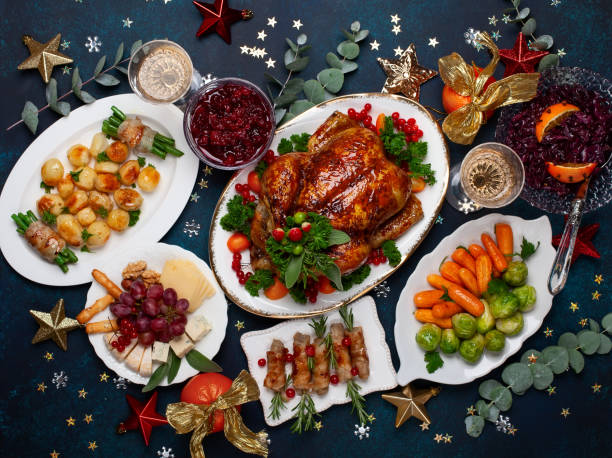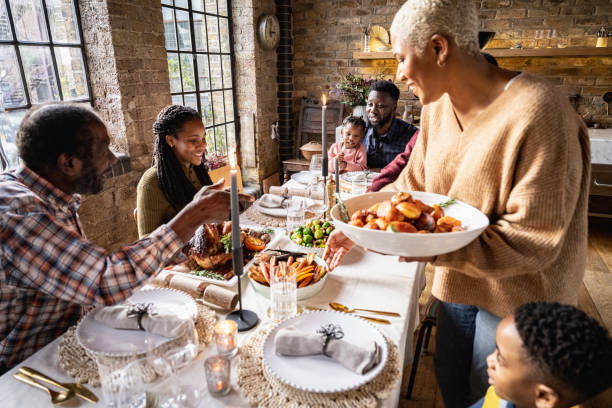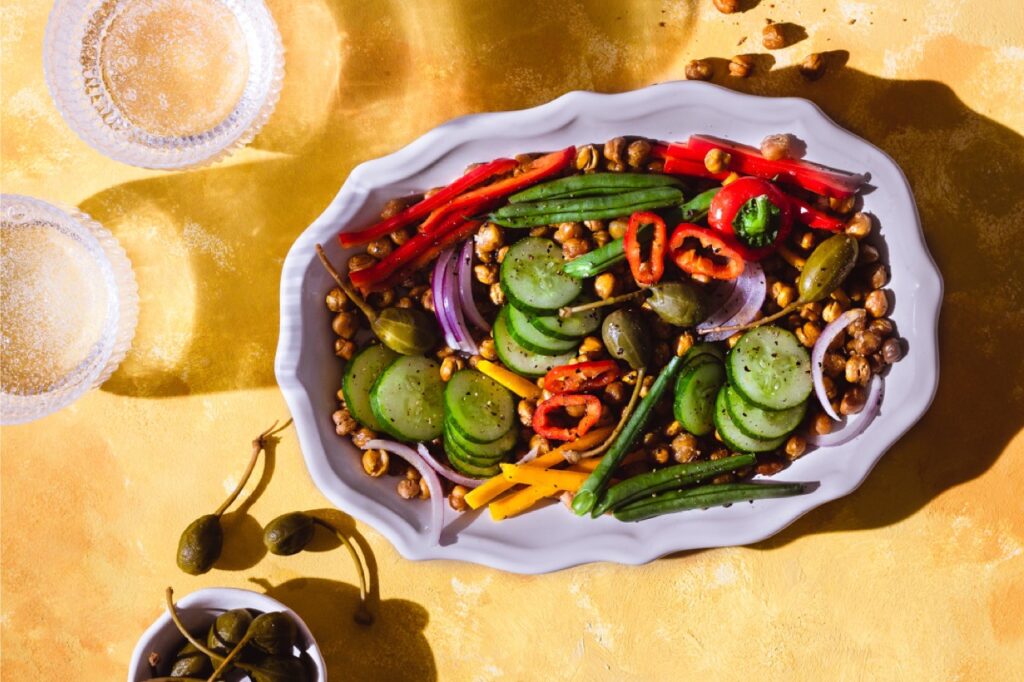What to Eat and Drink
What Vegetables To Use For Christmas Dinner
Are you organizing a Christmas feast and wondering what vegetables to add on your menu? There is no need to look any further! This article will walk you through the best veggetables to serve at your Christmas dinner, providing a delicious and nutritious array that will amaze your guests.
Importance of Vegetables in a Christmas Dinner
The main dish is generally the star of the show at Christmas dinner, whether it’s a luscious roast turkey, a savory ham, or a beautiful vegetarian centerpiece. However, the importance of vegetables should not be overlooked. Not only can vegetables offer color and vibrancy to your dish, but they also contribute essential nutrients and balance to the meal. They can enhance the flavors of the main meal while also providing a refreshing counterpoint to heavier dishes. Including a range of veggies in your Christmas dinner ensures a well-rounded and healthful meal that appeals to your guests’ different tastes and dietary needs.

Traditional Christmas Vegetables
No Christmas feast is complete without the traditional fare. Traditional vegetables such as roasted potatoes, crispy Brussels sprouts, and honey-glazed carrots have withstood the test of time and are popular among many. These time-honored classics offer a cozy touch and wonderfully compliment your main course. Roasted potatoes are a holiday staple, with their golden crisp skin and fluffy interior. When properly prepared to retain their crisp, Brussels sprouts provide a delicious blast of flavor. And honey-glazed carrots are a crowd-pleaser, with their inherent sweetness heightened by a sticky glaze. These traditional vegetables should be on your Christmas dinner menu.
Non-Traditional Christmas Vegetables
While traditional vegetables will always have a special place in our hearts, why not spice things up this year by including some novel selections in your Christmas dinner spread? Adding a dash of uniqueness to the dining table can add excitement and surprise. Consider roasted parsnips, which have a little sweeter and nuttier flavor than potatoes. Buttered green beans with almonds add beauty and crunch to the dish. A rich and delicious side dish like creamy cauliflower gratin is sure to please. Including these unusual vegetables adds a touch of flair and ingenuity to your Christmas feast, making it genuinely unforgettable.
Popular Vegetable Dishes for Christmas Dinner
Now that you’re familiar with both traditional and non-traditional Christmas veggies, let’s look at some popular vegetable dishes that will elevate your Christmas feast. These recipes are not only tasty, but they also capture the colorful spirit of the season. One popular option is a colorful roasted root vegetable medley, which includes carrots, parsnips, and beets among other root veggies. When the vegetables are roasted, their inherent sweetness intensifies, resulting in a delectable blend of flavors. A delightful winter salad with seasonal greens, cranberries, and toasted nuts topped with a tart vinaigrette is another classic. To balance off the richness of the main course, this salad adds a burst of freshness and lightness. Finally, a warm and beautiful appetizer of creamy and savory butternut squash soup topped with crispy sage leaves and a drizzle of cream sets the tone for the rest of the evening. These famous vegetable recipes will undoubtedly impress your guests and make your Christmas dinner an occasion to remember.

Tips for Selecting and Preparing Vegetables for Christmas Dinner
To ensure the success of your vegetable-centric Christmas feast, carefully pick and prepare your vegetables. Here are some expert tips and tactics for getting the most out of your vegetables:
- Freshness is essential: Choose vegetables that are fresh, crisp, and colorful. Avoid wilted or discolored veggies since they may lack flavor or texture.
- Seasonal produce: Embrace the flavors of the season by purchasing veggies in season during the winter. Seasonal vegetables is more delicious and nutrient-dense.
- Techniques for preparation: Experiment with different cooking methods to bring out the best in your vegetables. Roasting, steaming, and sautéing are all excellent methods for enhancing the natural flavors and textures of various vegetables.
- Flavor pairings: Consider the flavors of your main course and select veggies that compliment and enhance those sensations. Earthy root vegetables, for example, mix well with roasted meats, whereas lighter greens go well with fish or vegetarian dishes.
- Texture variation: To create an intriguing and gratifying eating experience, aim for a range of textures in your vegetable meals. For a balanced and pleasurable dish, combine crispy, crunchy, and creamy ingredients.
Following these guidelines will allow you to make a vegetable medley that not only tastes delicious but also highlights the greatest attributes of each vegetable.
Vegetarian and Vegan Options for Christmas Dinner
It’s crucial to provide vegetarian and vegan options for your Christmas meal in the spirit of inclusivity and catering to varied dietary requirements. Vegetarian options include stuffed bell peppers with a savory quinoa filling, roasted portobello mushrooms with a balsamic sauce, and a robust vegetable Wellington created with layers of roasted veggies and puff pastry. Vegans can enjoy meals like creamy vegan mashed potatoes with caramelized onions, delicious mushroom and lentil loaf, and a vivid roasted vegetable tart with a flaky vegan crust. These alternatives to meat-based meals are tasty and satisfying, ensuring that everyone at your Christmas dinner may share in the festive feast.

Recipes for Vegetable Dishes for Christmas Dinner
Here are a few recipes for vegetable dishes that are excellent for Christmas dinner to get you started:
Medley of Roasted Root Vegetables:
Ingredients:
- Carrots, parsnips, beets, and sweet potatoes
- Olive oil
- Salt and pepper
Instructions:
- Preheat the oven to 425 degrees Fahrenheit (220 degrees Celsius).
- Peel the vegetables and cut them into uniform pieces.
- Toss the vegetables in a bowl with the olive oil, salt, and pepper.
- On a baking sheet, arrange the vegetables in a single layer.
- Roast the vegetables for 30-40 minutes, or until soft and caramelized.
Salad with Cranberries and Toasted Nuts for Winter:
Ingredients:
- Mixed greens
- Dried cranberries
- Toasted walnuts or pecans
- Red onion, thinly sliced
- Balsamic vinaigrette
Instructions:
- Combine the mixed greens, dried cranberries, roasted almonds, and red onion in a large mixing basin.
- Toss with the balsamic vinaigrette to mix.
- Serve immediately as a cool side salad.
Soup with Creamy Butternut Squash:
Ingredients:
- Butternut squash, peeled and cubed
- Onion, chopped
- Garlic, minced
- Vegetable broth
- Fresh sage leaves
- Cream (optional)
Instructions:
- Sauté the onion and garlic in a large pot until aromatic.
- Combine the butternut squash and vegetable broth in a mixing bowl.
- Bring to a boil, then reduce to a low heat and continue to cook until the squash is soft.
- Puree the soup with an immersion blender or a conventional blender until smooth.
- Garnish with crispy sage leaves and a dollop of cream, if desired.
Feel free to adapt these recipes to your preferences and include them in your Christmas dinner menu. These vegetable dishes will impress your visitors with their wonderful flavors and attractive appearance.
Pairing Vegetables with Other Christmas Dinner Staples
While vegetables are a vital part of Christmas dinner, they should not overpower the other dishes on the table. It’s critical to combine your vegetables with other Christmas dinner staples to produce a harmonic and balanced feast. Consider serving roasted turkey with cranberry sauce, which provides a tart and sweet aspect that complements the meat. If you’re offering glazed ham, roasted sweet potatoes or acidic coleslaw might give a nice contrast in flavor and texture. Consider how each item interacts with the others to create a unified and memorable dining experience when arranging your menu.
Conclusion
This Christmas, I’m determined to make my dinner memorable with the right vegetables. From traditional favorites like roasted potatoes and Brussels sprouts to non-traditional options like roasted parsnips and cauliflower gratin, there is a wide range of choices to suit every palate. By balancing flavors, textures, and colors, I can create a vegetable spread that not only tastes delightful but also showcases the vibrant spirit of the season. I won’t forget to consider the dietary preferences of my guests and will offer vegetarian and vegan options. With the help of expert tips, recipes, and pairing suggestions, I’m well-equipped to wow my loved ones with a show-stopping vegetable spread that will make this Christmas dinner a truly special and memorable occasion.
So I’m going ahead, embracing the power of vegetables, and elevating my Christmas dinner to new heights. I’m confident my guests will be impressed, and my festive feast will be talked about for years to come. Happy cooking and Merry Christmas!


